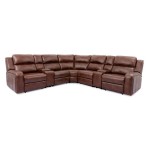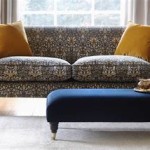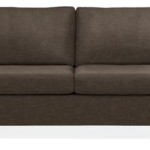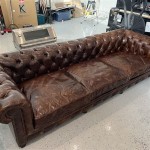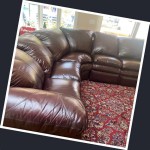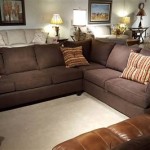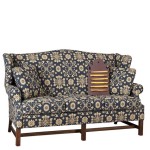Dark Brown Leather Sofa Decorating Ideas
A dark brown leather sofa is a classic and versatile furniture piece that can anchor a living room, den, or even a sophisticated home office. Its rich color and texture provide a sense of warmth, luxury, and durability. However, effectively decorating around a dark brown leather sofa requires careful consideration of color palettes, textures, and complementary furniture to avoid a room that feels drab or heavy.
The following article explores various decorating strategies and ideas to enhance the aesthetic appeal of a space featuring a dark brown leather sofa. These ideas encompass color schemes, accent furniture, textiles, artwork, and lighting, all contributing to a harmonious and inviting environment.
Choosing the Right Color Palette
The success of any room design hinges on a well-chosen color palette. When working with a dark brown leather sofa, the goal is to create contrast and balance. The depth of the brown can easily dominate a space, so selecting complementary colors is crucial to prevent the room from feeling too dark or visually monotonous.
Light Neutrals: One of the most effective strategies is to pair the dark brown sofa with light neutral walls and accents. Colors like off-white, cream, beige, and light gray offer a clean and sophisticated backdrop, allowing the sofa to stand out without overwhelming the room. These neutral tones provide a calming effect and make the space feel larger and more airy. Use varying shades of these neutrals to add depth and prevent a flat, one-dimensional appearance.
Warm Tones: For a cozy and inviting atmosphere, warm tones can be incorporated into the design. Colors like rusty oranges, golds, and deep reds can complement the brown sofa, creating a rich and inviting ambiance. However, it is essential to use these colors judiciously, as too much of any saturated color can make the room feel smaller and more enclosed. Consider using these warmer tones in accent pillows, throws, artwork, or area rugs to add pops of color without overwhelming the space.
Cool Tones: To achieve a more modern and sophisticated look, cool tones such as blues, greens, and purples can be used. These colors provide a refreshing contrast to the warmth of the brown leather. Soft blues and greens evoke a sense of tranquility, while deeper shades like navy or emerald green can add a touch of elegance and drama. Incorporate these colors through wall paint, curtains, or decorative accessories.
Accent Colors: In addition to the primary color scheme, consider adding accent colors to inject personality and visual interest into the room. Bright colors like turquoise, coral, or mustard yellow can provide a vibrant contrast and prevent the space from feeling too serious. These accent colors should be used sparingly, focusing on small details like cushions, artwork, or decorative objects. The key is to create a balance between the grounding effect of the brown leather and the energizing effect of the accent colors.
Selecting Complementary Furniture and Accessories
Beyond the color palette, the choice of furniture and accessories plays a significant role in creating a cohesive and visually appealing space. The texture, material, and style of these elements should complement both the sofa and the overall design aesthetic.
Coffee Tables: A coffee table serves as a focal point in the center of the seating area. When selecting a coffee table for a room with a dark brown leather sofa, consider materials that provide contrast and visual interest. A glass coffee table with a metal frame offers a light and airy feel, while a wooden coffee table with a lighter finish adds warmth and natural texture. An ottoman-style coffee table upholstered in a patterned fabric can also be an excellent choice, providing both functionality and visual appeal.
Side Tables: Side tables are essential for providing convenient surfaces for lamps, books, and beverages. Opt for side tables that complement the coffee table and overall design style. Sleek, modern side tables made of metal or glass work well in contemporary spaces, while rustic wooden side tables add charm and character to a traditional setting. Consider the height of the side tables in relation to the sofa arms to ensure they are functional and comfortable to use.
Area Rugs: An area rug can define the seating area and add warmth and texture to the room. Choose a rug that complements the color palette and design style. A light-colored rug with a subtle pattern can brighten up the space and provide a visual contrast to the dark brown sofa. Alternatively, a rug with a bold geometric pattern or a rich texture can add personality and visual interest. Ensure the rug is large enough to anchor the seating area, with at least the front legs of the sofa resting on the rug.
Throw Pillows and Blankets: Throw pillows and blankets are essential for adding comfort and style to a sofa. Experiment with different textures, patterns, and colors to create visual interest and enhance the overall aesthetic. Layering different sizes and shapes of pillows can add depth and dimension. Consider using materials like velvet, linen, or faux fur to add tactile appeal. A strategically placed throw blanket can add a pop of color or texture and provide a cozy touch.
Lighting: Proper lighting is crucial for creating a welcoming and functional space. Incorporate a variety of lighting sources, including ambient, task, and accent lighting. Floor lamps and table lamps provide ambient light and can add a decorative touch. Task lighting, such as reading lamps, is essential for providing focused illumination for reading or other activities. Accent lighting, such as spotlights or wall sconces, can highlight artwork or architectural features.
Incorporating Texture and Patterns
Texture and patterns play a critical role in adding visual interest and depth to a room, especially when working with a solid-colored sofa like dark brown leather. By carefully selecting fabrics, materials, and decorative elements, individuals can create a space that is both visually stimulating and comfortable.
Textured Fabrics: Incorporating textured fabrics into the design can add tactile appeal and prevent the room from feeling flat or monotonous. Consider using velvet, linen, or corduroy for throw pillows, curtains, or upholstery. These fabrics add depth and dimension and can create a more inviting and comfortable atmosphere. Mixing different textures can also add visual interest and prevent the space from feeling too predictable.
Patterned Fabrics: Patterns can add personality and visual interest to a room. Consider using patterned fabrics for throw pillows, curtains, or area rugs. Geometric patterns, floral patterns, and abstract patterns can all work well, depending on the overall design style. When using patterns, it is essential to maintain a sense of balance and avoid overwhelming the space. Consider using a mix of small-scale and large-scale patterns and limit the number of patterns to avoid visual clutter.
Natural Materials: Incorporating natural materials like wood, stone, and metal can add warmth and texture to the room. A wooden coffee table, a stone fireplace, or metal accent pieces can complement the dark brown leather sofa and create a more organic and inviting atmosphere. Natural materials also add a sense of authenticity and connection to the outdoors.
Artwork: Carefully chosen artwork can add personality and visual interest to the room. Consider selecting artwork that complements the color palette and design style. Abstract paintings, landscape photographs, and sculptural pieces can all work well, depending on the overall aesthetic. Ensure the artwork is appropriately sized for the space and hung at the correct height. Creating a gallery wall can also be an effective way to add visual interest and showcase a collection of artwork.
Plants: Adding plants to the room can bring life and freshness to the space. Plants not only add visual appeal but also improve air quality and create a more relaxing atmosphere. Consider using a variety of plants in different sizes and shapes to add visual interest. Potted plants, hanging plants, and floor plants can all work well, depending on the space and available light. Select plants that are appropriate for the lighting conditions and maintain them properly to ensure they thrive.
By carefully considering the color palette, furniture choices, and incorporation of textures and patterns, individuals can create a well-designed and inviting space that showcases the beauty and versatility of a dark brown leather sofa. The key is to balance the grounding effect of the dark brown with lighter, brighter elements to create a room that is both stylish and comfortable.

Decorating Around A Leather Sofa Centsational Style

How To Visually Lighten Up Dark Leather Furniture Couches Living Room Brown Couch

Dapperdemeanor Com Brown Leather Sofa Living Room Dark Furniture

Decorating Around A Leather Sofa Centsational Style
:strip_icc()/leather-sofa-living-room-ideas-2-proem-studio-white-oak-bbcb9cff21384c118adb7d407a843ebc.jpeg?strip=all)
23 Living Rooms With Leather Sofas That Look Incredible

20 Best Dark Brown Leather Sofa Decorating Ideas And Designs 2024 Living Room Furniture

How To Style A Brown Leather Sofa Design Guide Minotti London

20 Best Dark Brown Leather Sofa Decorating Ideas And Designs 2024 Decor Couch Living Room

Brown Leather Sofa Inspirational Living Room Ideas Decoholic

Styling Your Brown Leather Sofa The Decorologist

